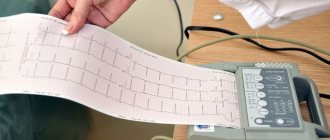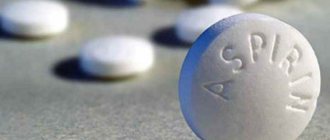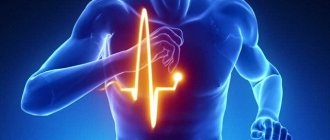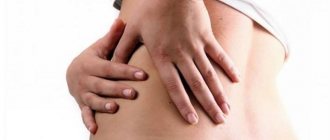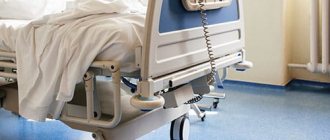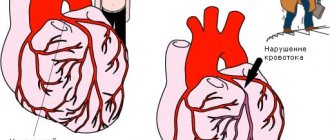Causes of nagging pain
When the heart is pulled, this condition is most often not acute. Serious life-threatening pathologies are usually accompanied by severe pain. Causes of heaviness in the heart area:
- physical activity (in fact, the discomfort is associated with a lack of liver glycogen, but the pain may be similar to heart pain);
- stress (neurogenic cardialgia);
- pathologies of internal organs.
If the pain arose as a reaction to stress or physical activity of a certain strength (and then disappeared), the condition does not require treatment. But sometimes discomfort during exercise occurs due to serious heart problems, so it is worth undergoing an examination in any case.
Can your heart hurt for days?
Unpleasant sensations manifest themselves in different ways. The patient may feel a burning sensation, tingling, shooting, rapid rhythm or aching symptoms. This zone contains not only the heart muscles, but also the upper part of the spinal column, parts of the gastrointestinal tract, and the lungs, which are supplied by the same nerve canals. It is difficult for a person to independently determine whether his heart or any other organ is bothering him.
If discomfort occurs quite rarely, it was preceded by a strong emotional shock or a long stay in a stressful situation, normalization of the psychosomatic state will quickly help restore the usual state of health. If pain persists, it is recommended to contact a cardiologist as soon as possible, who will determine whether the anomaly is related to his field of activity. If necessary, the doctor will involve other highly specialized specialists in diagnostic manipulations.
Diseases that cause heart strain
Pathological causes of nagging pain in the heart area are both dangerous and frivolous. The most common diseases accompanied by this symptom:
- neurological pathologies: osteochondrosis, herniated intervertebral discs, scoliosis (compression of the nerve ending);
- diseases of the cardiovascular system - coronary heart disease, atherosclerosis, pericarditis, aortic aneurysm, pulmonary embolism, heart rhythm disturbances;
- pathologies of the digestive system - gastritis, pancreatitis, peptic ulcer (pain often appears against the background of hunger or just eaten food);
- neurocirculatory dystonia - combined with frequent dizziness;
- neurosis - pain appears against a background of stress due to an excess of catecholamines in the blood, against the background of which oxygen starvation of tissues occurs;
- diseases of the respiratory system - pneumonia, tuberculosis.
It is impossible to make a diagnosis on your own, so if you experience nagging pain in the heart area, you should consult a doctor. A comprehensive examination and accurate diagnosis will allow you to prescribe adequate treatment to relieve and prevent the occurrence of unpleasant symptoms.
How to understand if pain is related to heart disease
The thought of heart disease is the first thing that comes to mind when pain appears in the chest. In this case, it is better to consult a doctor once again than to one day regret not taking your health seriously enough.
In order to promptly recognize cardialgia, it is important to know the localization of heart pain, their characteristics and features. A test will help determine the cause of the pain.
Where does your heart hurt?
The heart is located behind the sternum with a slight shift to the left. It is reliably protected by the chest and can change its location depending on the size and structure of the bone structures.
Cardialgia is usually not “point”: it is impossible to indicate a specific place where the pain is localized. In addition, the sensations often radiate—spread to other parts of the body.
The typical location of pain in the heart is directly behind the sternum or behind the chest on the left. In most heart diseases, including the most dangerous ones, heart pain moves:
- to the right side of the chest,
- under the left shoulder blade,
- in the axillary areas,
- in the shoulder and left arm, sometimes symmetrically on the right side,
- on the lower jaw and teeth,
- to the cervical spine,
- to the area under the sternum.
The area of pain in heart disease can be extensive (Fig. 3). Irradiation of cardialgia can cause difficulties in diagnosing heart diseases: symptoms in this case will indicate diseases of other organs.
Figure 3. Localization and irradiation of pain in the heart. Source: MedPortal
How does your heart hurt?
The characteristics of cardialgia depend on the disease that causes pain. First of all, a distinction is made between periodic and constant chest pain. This is important for determining the nature of possible changes in the heart.
Periodic pain
If pain in the heart is associated with a sharp narrowing of the vessels that fill the organ with blood, sharp but short-lived pain occurs - most often up to 30 minutes (Fig. 4). Taking heart medications helps the symptoms disappear quickly. A nitroglycerin tablet under the tongue is especially effective: the drug helps to immediately dilate the arteries and restore blood flow.
Figure 4. Short-term pain in the heart. Source: MedPortal
Constant pain
Prolonged acute pain in the heart most often signals dangerous disorders of the organ, for example, myocardial infarction. In this case, nitroglycerin does not help: poor circulation causes irreversible changes in the heart muscle.
Prolonged dull, aching, tingling pain may indicate chronic diseases of the cardiovascular system: heart defects, cardiomyopathies, inflammatory processes.
The nature of the pain
In the diagnosis of cardiovascular diseases, pain intensity plays an important role. For example, during an acute myocardial infarction, the sensations can be so intense that patients are given strong pain medications to prevent the development of shock.
Pain in the heart can be varied: sharp, burning, stabbing, pressing, aching, pulling, dull. Symptoms depend on the underlying disease, but the nature of the pain cannot accurately determine their cause: this requires certain research methods.
Also, pain syndrome is often complemented by other symptoms of diseases. For example, with acute pain in the heart, the rhythm often goes astray: there is a feeling of interruptions in its work, frequent or intermittent heartbeat.
Cardialgia can occur against a background of high blood pressure (BP). In these cases, signs of hypertension are added to the symptoms. Some heart diseases, on the contrary, are accompanied by hypotension - a decrease in blood pressure.
Myocardial infarction
When cardialgia manifests itself, it is first of all important to exclude acute myocardial infarction (MI) - the death of part of the heart muscle. Characteristic signs of MI:
- typical heart pain - behind the sternum, with reflection in the left arm, under the left shoulder blade, in the neck, lower jaw, ear;
- the nature of the pain is acute, burning, with extensive damage - unbearable;
- the severity of the sensations does not depend on the intake of nitroglycerin;
- the duration of pain is at least 30 minutes, with a large area of infarction it can last several hours or days;
- the pain is accompanied by a sharp deterioration in the condition, additional symptoms appear - dizziness, pallor, nausea, shortness of breath, sweating, rapid heartbeat, anxiety, fear of death.
It is important to know the first signs of myocardial infarction - this can help save a person’s life (Fig. 5).
If symptoms that are characteristic of a myocardial infarction develop, you must call 112 and seek emergency medical help. It is important to act quickly: you have only 1-2 hours to “save” the myocardium.
Figure 5. First signs of myocardial infarction Source: MedPortal
Heart pain in various heart diseases
If the diagnosis of myocardial infarction is excluded, it is necessary to look for another cause of heart pain.
Information about the location, nature and duration of sensations helps to establish a preliminary diagnosis (Table 1). Table 1. Features of pain in major heart diseases.
| Pathology | Description of pain |
| Angina pectoris (ischemia - narrowing of the coronary arteries) | Localization: behind the sternum with transition to the left shoulder blade, shoulder, jaw Character: strong, pressing, burning Duration: up to 20 minutes, after taking nitroglycerin it goes away within 2–3 minutes Features: most often the symptom occurs in the wake of emotional or physical stress, accompanied by a feeling of fear |
| Myocarditis - inflammation of the heart muscle | Localization: depends on the severity of the condition Character: dull, nagging, aching Duration: at the beginning of the disease the pain is short-lived, then it can become constant Features: does not go away after taking nitroglycerin |
| Heart valve diseases | Localization: depending on the location of the affected valve Character: depends on the pathology, most often aching, pressing Duration: can be long and even permanent Features: often accompanied by shortness of breath, aggravated by exposure to cold air, accompanied by irregular heartbeat, rapid heartbeat |
| Cardiomyopathies - changes in the size and function of the heart | Localization: depends on which parts of the heart are changed, can be localized or widespread Character: pulling, aching, squeezing Duration: may be constant or paroxysmal Features: often goes away after nitroglycerin tablets, but not always |
| PE - pulmonary embolism | Localization: left behind the sternum Character: depends on the level of arterial damage, more often - stabbing. Intense pain may be a sign of damage to the large branches of the pulmonary artery (this condition is life threatening) Duration: depends on the severity of the condition Features: shortness of breath develops, blood pressure decreases, pulse quickens, nitroglycerin does not work |
Important! Pain in the pericardial region is not always a sign of heart problems. But sometimes the heart hurts in a different way than usual. Some cardiac pathologies may manifest as pain in other organs, which significantly complicates the diagnostic search. For example, there are atypical forms of myocardial infarction:
- painless - does not show characteristic symptoms for a long time,
- abdominal - pain is localized in the abdominal area, simulating gastritis or pancreatitis,
- asthmatic - resembles an asthma attack,
- arrhythmic - the main symptom of the disease is not pain, but heart rhythm disturbances.
Heart pain and intercostal neuralgia
One of the common types of “non-cardiac” chest pain is intercostal neuralgia. The condition occurs due to damage to one of the nerves that are located between two ribs (Fig. 6).
Figure 6. Cause of pain with intercostal neuralgia. Source: c-clinica.com
The pain becomes so acute that it can be confused with a symptom of a heart attack.
But there are several features that make it possible to distinguish a neurological disease from a serious heart pathology (Table 2). Table 2. Differences between pain in heart disease and intercostal neuralgia
| Sign | Cardialgia | Intercostal neuralgia |
| Localization of pain | Pain sensations are concentrated behind the sternum, but the patient cannot indicate a specific place | The patient can accurately indicate the point of pain localization |
| Nature of pain | Burning, squeezing | Aching, shooting, pulling |
| Pain intensity | With angina pectoris, the pain lasts less than 15–20 minutes, with myocardial infarction - more than 30 minutes. The severity of pain depends on the severity of the lesion. With extensive myocardial infarction it is so intense that it becomes unbearable | The pain worries around the clock, its intensity does not depend on the time of day |
| Irradiation - spreading of pain | On the left side of the body - in the shoulder blade, shoulder, neck, arm | Between the ribs, along the intercostal nerves |
| Features of pain | Pain in the heart does not depend on movements, coughing, breathing | Pain increases when touching the intercostal spaces, when turning the body, walking, deep breathing, coughing |
| Taking nitroglycerin | Helps in most cases | Does not help |
| Connection with hypothermia | No | Often occurs in connection with neuritis - inflammation of the nerve due to hypothermia |
In addition, the following symptoms are characteristic of intercostal neuralgia:
- burning sensation on the skin at the site of the damaged nerve;
- impaired skin sensitivity, numbness, tingling in the chest area;
- muscle stiffness - difficulty moving on the side of the affected nerve.
However, it is impossible to exclude serious diseases only by assessing the pain syndrome: for this you need to do an electrocardiogram (ECG) and undergo other examinations.
Diagnostics
After an in-person examination, collection of anamnesis and communication with the patient, the doctor creates an examination plan. It includes:
- pulse measurements;
- blood pressure monitoring for 7–14 days;
- auscultation of the heart;
- neurological tests;
- general blood analysis;
- electrokariogram (ECG);
- Ultrasound of the heart (EchoCG);
- X-ray of the chest organs (survey and targeted when suspicious areas are detected);
- FGDS;
- MRI or CT scan with or without contrast agent;
- endoscopy;
- X-ray of the stomach with contrast;
- X-ray diagnostics or MRI of the spine.
Such an examination will create a complete picture of the disease. Based on the data obtained, treatment is prescribed.
How and where is a heart test performed?
The best way to determine the source of pain is a tomographic examination using an MRI machine. It can be carried out in any clinic that has the necessary equipment. You can find the nearest organization on the website of the unified registration service or get a free consultation by calling the phone number listed at the top of the page. Choose a diagnostic center, sign up for a scan and receive a special discount from the service in the amount of 1000 rubles.
Treatment
Depending on the diagnosis, adequate therapy is selected. Possible treatment:
- taking analgesics;
- antibiotic therapy for tuberculosis, pericarditis, peptic ulcer, bacterial pneumonia;
- tranquilizers for neurosis;
- antacids for gastritis and peptic ulcers;
- nootropics and antispasmodics for neurocirculatory dystonia;
- surgical treatment of herniated intervertebral discs, aortic aneurysm;
- nitroglycerin for an attack of coronary heart disease;
- motherwort or valerian for stress;
- non-steroidal anti-inflammatory drugs for pericarditis.
The causes of nagging pain do not always have serious consequences. But this condition itself is unpleasant, so it is worth visiting a doctor to prescribe adequate therapy.
Read also: My heart aches
Dear patients! Remember that only a qualified doctor can make an accurate diagnosis, determine the causes and nature of the disease, and prescribe effective treatment. You can make an appointment with our specialists or call a doctor at home by calling 8-(4822)-33-00-33
Be healthy and happy!
Discomfort not related to the heart
The main physiological problems with similar symptoms are the following pathologies:
- Disorders in the musculoskeletal system - osteochondrosis of the cervical and thoracic spine, intercostal neuralgia associated with pinched nerve roots.
- Gastrointestinal diseases - ulcerative lesions, tumor formations of the stomach and esophagus, hernia, gallstones.
- Problems with the functionality of the respiratory system - inflammation of the lining of the lungs (pleura).
- Neurosis and panic attacks are emotional imbalances in the body associated with an acute experience of a stressful situation.
Determining whether the listed anomalies relate to cardiac disorders is helped by the addition of accompanying symptoms, which include deterioration of well-being without signs of shortness of breath, rapid pulse, and the spread of pain to the upper extremities, neck or face. It is important to remember what preceded the onset of discomfort, whether there was severe hypothermia or high physical activity before this.
Treatment (relief) of angina pectoris
Angina pectoris can be treated in a variety of ways: various medications are used, the patient’s lifestyle, habits, physical activity are completely reviewed and adjusted, and, if necessary, surgical treatment is prescribed.
When treating angina pectoris with medications, the following types of drugs can be used:
- beta-blockers and calcium channel blockers: to reduce the oxygen demand of the heart muscle;
- anticoagulants: to reduce the risk of blood clots;
- statins: to reduce the rate of growth of atherosclerotic plaques
- calcium channel blockers of the dihydropyridine series: to dilate the coronary arteries, which increases the supply of oxygen to the myocardium;
- antidepressants, sedatives, hormonal therapy - for microvascular angina.
If surgical treatment is necessary, the patient may undergo one of the following types of operations:
- coronary artery bypass grafting (CABG);
- percutaneous transluminal balloon coronary angioplasty (PTCA);
- stenting.
Only a doctor can prescribe competent and comprehensive treatment to a patient, including drug treatment. Only in this case will it be safe and effective. In addition, a person needs to “help” doctors and monitor his own health and lead a healthy lifestyle:
- stop smoking;
- reduce and/or stop drinking alcohol;
- monitor your diet: reduce the consumption of fatty meat, butter, and increase the consumption of fish, vegetables, eat fruits and cereals daily, giving up fast carbohydrates (sugar, chocolate, cakes, etc.);
- Constantly monitor blood pressure and keep a diary of measurements;
- give up extreme sports, but at the same time maintain an active lifestyle (swimming, walking, other types of physical activity as agreed with your doctor);
- Be sure to take medications prescribed by your doctor.
Pain in the heart area radiates to the shoulder blade. Diagnostics
If your heart hurts and radiates under your shoulder blade, then you should consult a specialist as soon as possible. At the KDS Clinic, patients undergo a comprehensive examination using modern equipment and new technologies. After the initial examination, the patient informs the doctor about the nature and frequency of pain. The patient is referred for tests and examinations. When your heart hurts and radiates to your shoulder blade, visit a cardiologist, neurologist and orthopedist. Undergo ultrasound diagnostics, electrocardiogram and Holter examination. Call the clinic at number.
Symptoms of angina
- The main symptom of angina is pain behind the sternum, which is also felt by a person as strong compression, as if the heart is being squeezed from the inside. Such pain can radiate not only to the left side of the body (shoulder, arm, under the shoulder blade), neck, but even to the stomach (its upper part).
- During an attack, you may experience a fast or slow heart rate. It is the change in heart rate that can precede an attack and be a kind of first symptom;
- A person may also begin to sweat (cold, sticky sweat), feel dizzy, or feel nauseous.
- Anxiety and fear may appear.
- Duration of attack: from several minutes to 15-20 minutes.
Angina pectoris has so-called “provocateurs” - physical activity and stress. According to the level of physical activity that provokes an attack, angina pectoris is divided into functional classes: from functional class 1 (pain appears only with very intense muscular work) to functional class 4 (pain appears only with minimal exertion or even at rest) .
An important feature of angina pectoris: the attack goes away after the cessation of stress - physical, emotional - or after a person takes medication (Nitroglycerin).
What to do if there is pain
Patients themselves know how to help themselves with pain in the heart due to a known disease; doctors teach them this. If you have pain, you should not take unfamiliar medications. Perhaps they are contraindicated for a particular person.
- If pain is accompanied by high blood pressure in a hypertensive patient, you should take quick-acting medications (dissolve under the tongue).
- For angina pectoris, sprays such as Isoketa are prescribed. Patients should carry them in their pocket with them. Nitroglycerin acts on the affected vessels, but is not well tolerated by everyone. Severe headaches are possible.
- At home, mustard plaster placed on the heart area and massage on pain points have a distracting effect.
Massage along the spine helps with osteochondrosis with pain


